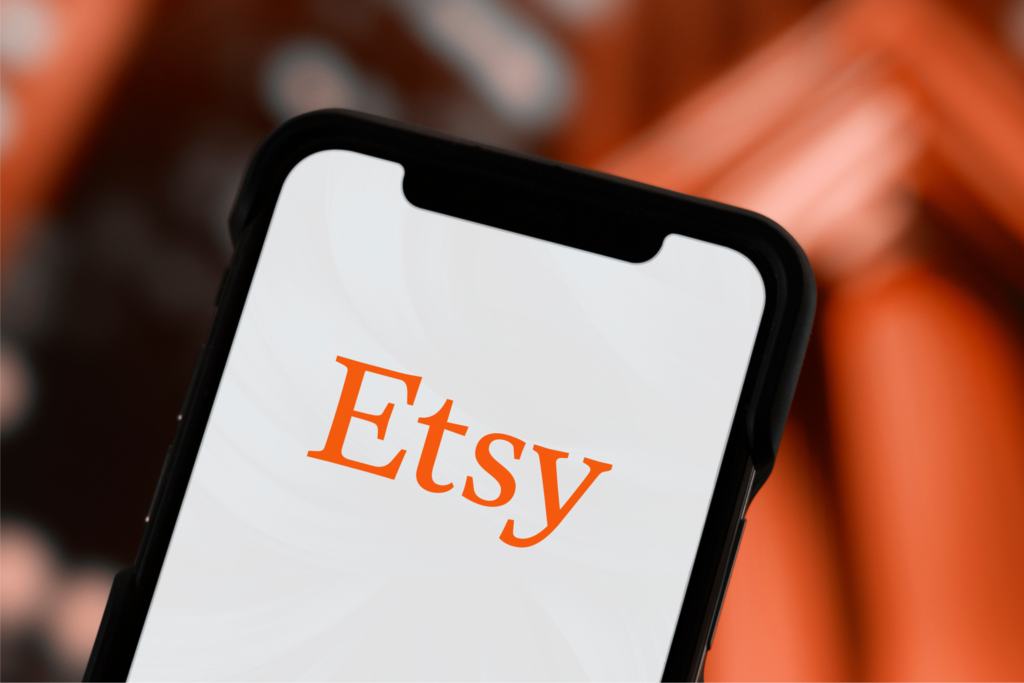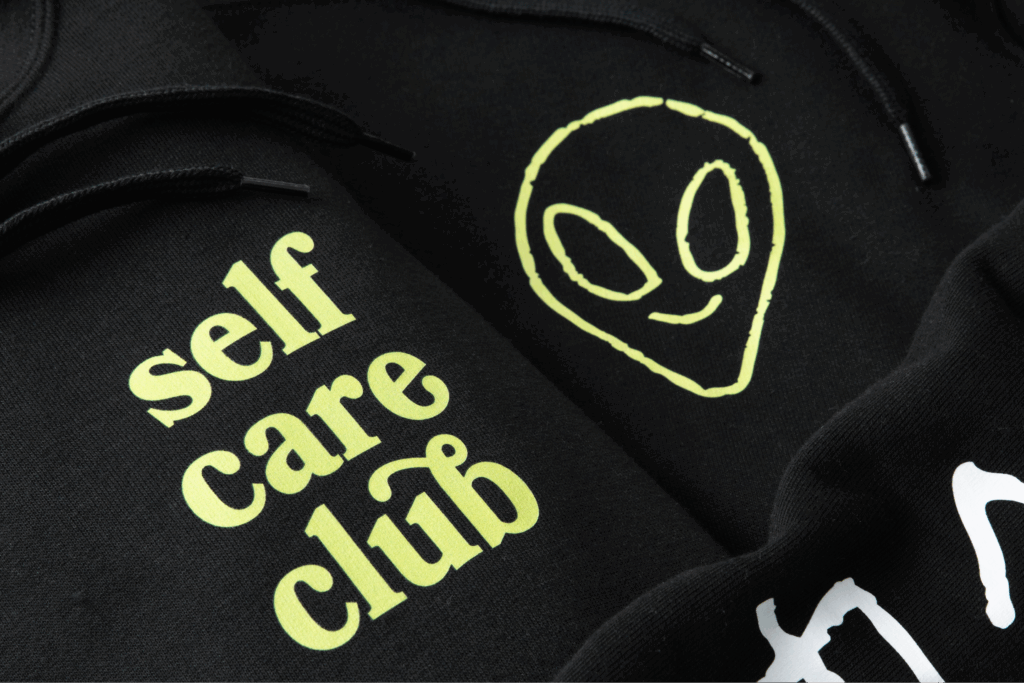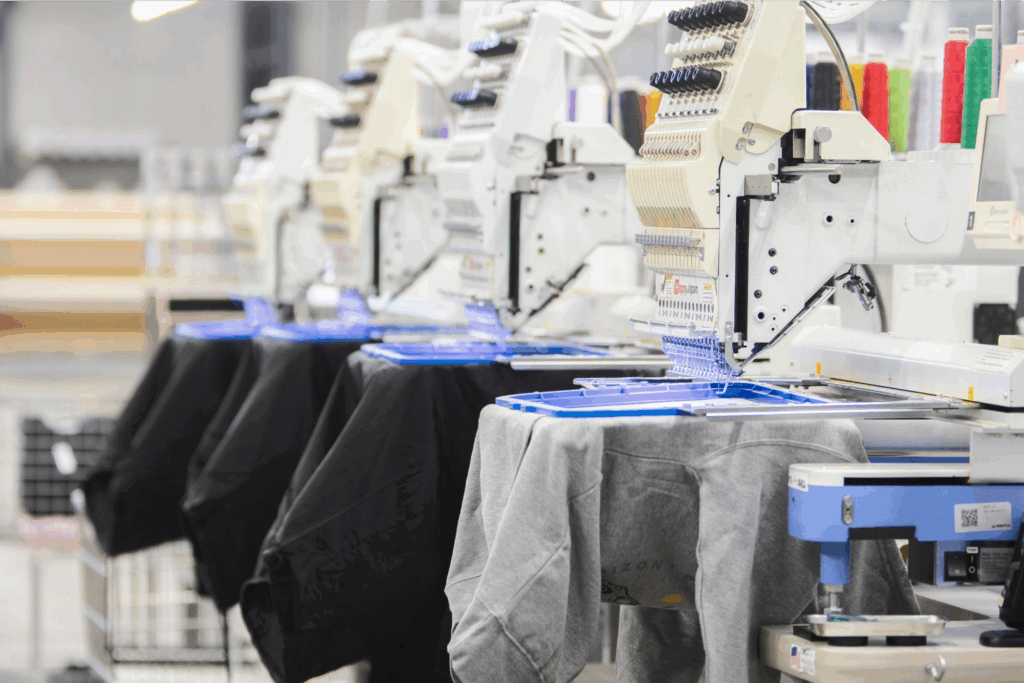Sell custom products without inventory
The choice between Print on Demand vs inventory management defines how modern entrepreneurs build and scale their online stores. Each business model offers its own rhythm – POD’s low-risk freedom versus inventory’s high-control potential.
Let’s break down both systems, compare profit margins, upfront costs, and fulfillment speed, helping you choose the model that aligns with your business goals and budget.
What is Print on Demand (POD)?
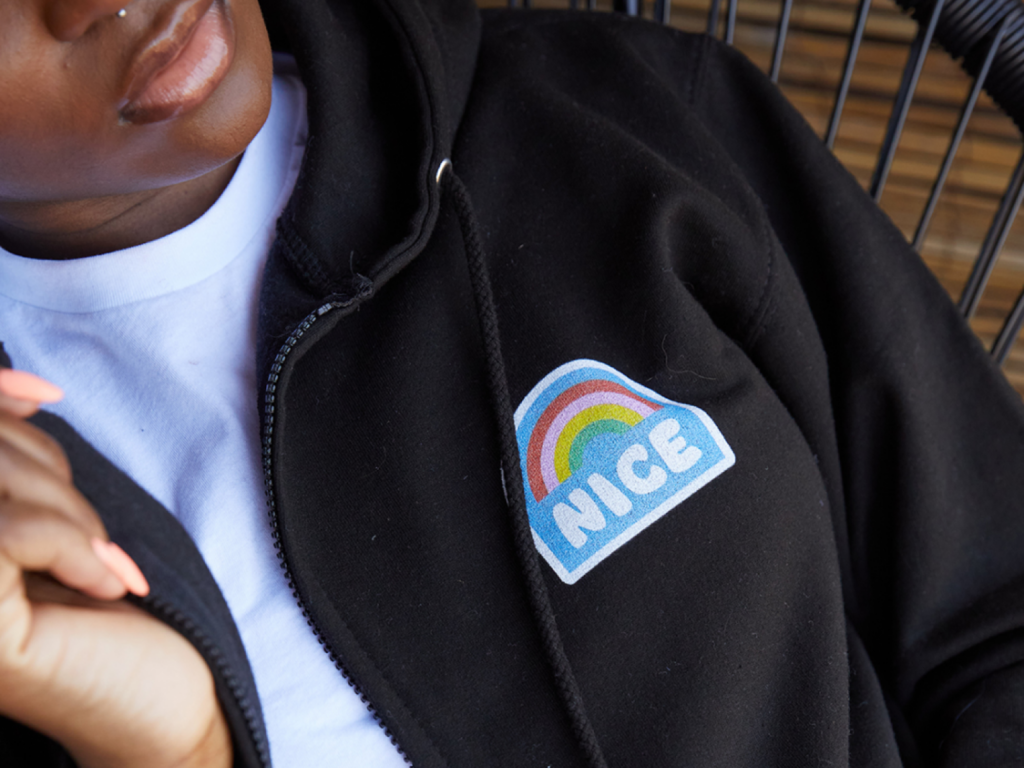
Print on Demand (POD) is a flexible business model that eliminates the need for traditional inventory management. Products are printed only when somebody buys from your store, letting you simplify operations for your online business and avoid the financial risks of holding stock.
The print-on-demand market is predicted to reach a whopping $57.49 billion by 2033. So this is your sign to jump on board and start selling your own products.
You focus on design and marketing while a print-on-demand platform like Printify handles printing, packaging, and shipping.
How it works
You create custom products such as t-shirts, hoodies, mugs, or tote bags, then list them in your store. When a customer orders, Printify prints and ships the product to them. You pay the item’s base price and keep the difference between that and the retail price as your profit.
| Pros | Cons |
|---|---|
| Low startup costs and no risk of unsold inventory | Less control over fulfillment time and packaging |
| Access to higher profit margins because there’s no need for machines, bulk orders, or excess stock | Quality consistency depends on the Print Provider |
| Easy to test designs and expand internationally thanks to Printify’s global reach | Sometimes higher per-unit costs |
| Scalable model that lets you grow your online business quickly |
Best for: Creators, small businesses, and entrepreneurs who value flexibility, want to launch quickly, and prefer a low-financial-risk model that allows for unlimited creativity, custom branding, and global selling opportunities.
What is traditional inventory?
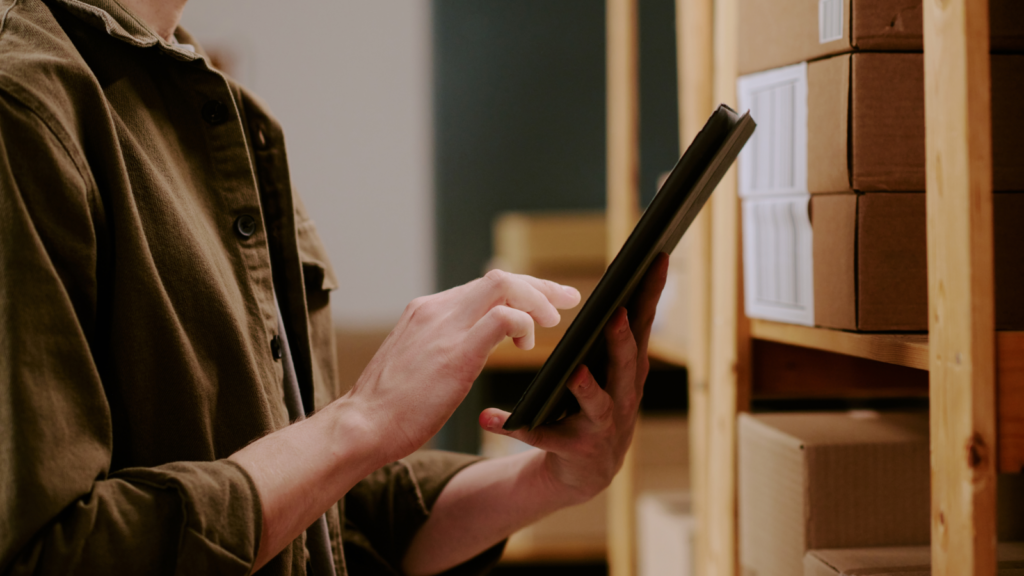
The traditional inventory model is the opposite of POD – you’ll have to purchase products in large quantities in advance, keep them in a storage space, and handle shipping logistics yourself.
This business model provides control but also comes with more financial risks.
How it works
You buy stock in bulk, keep it in a warehouse, and store products until they’re sold. You handle packaging, shipping, and customer service directly.
| Pros | Cons |
|---|---|
| More control over packaging, design, shipping, and quality | Requires a significant initial investment – you’ll buy tons of inventory upfront |
| Easier to predict stock for steady sellers and recurring customers | High warehouse costs and risk of unsold inventory |
| Lower per-unit costs if you buy huge quantities of products | Products can become outdated or unsold, tying up funds |
Best for: Large, established brands with steady demand, a big budget, and the bandwidth to handle logistics management for eCommerce. This model suits those seeking full control and consistent branding across all operations within the two-business-model framework.
Print on Demand vs inventory: Deep dive into both models

Let’s break down how each business model really works in practice. Both the print-on-demand model and the traditional inventory model can move your online store forward, but they take opposite paths.
One is a low-risk business model built for flexibility and speed, while the other relies on control, bulk inventory, and capital-heavy inventory management.
Benchmark metrics and profit comparison
Profitability depends on how fast you fulfill orders, how often you restock, and how well you adapt to market trends. Return rates, shipping times, and your ability to manage inventory all shape your success.
Print on Demand
- Average fulfillment time: 2–7 business days, depending on your Print Providers.
- Return rate: Low, since every product is made to order.
- Profit margins: Moderate to high when products are priced strategically, as there’s no waste or unsold stock.
What this means: The print-on-demand model lets you maintain stable margins without holding excess inventory or tying up cash flow.
Use Printify’s pricing calculator. It factors in product cost, printing, and shipping to help you set good profit margins without overcharging customers.
Inventory-based model
- Fulfillment time: Faster for stocked goods.
- Return rate: Higher, since there’s a greater possibility of the wrong items being shipped, and because of the lack of personalization.
- Profit margins: Generally larger, but offset by warehouse space and staff expenses.
What this means: A traditional inventory model may lower prices in some areas, but any dip in market trends or demand, plus the costs of storing products and paying potential staff, can really lower profits.
Cost comparison
The cost structure is where the two models have the most difference. One minimizes upfront costs and risk, the other requires initial investment for potential long-term gains.
Print on Demand
When choosing Print on Demand, you pay only when a product sells, with no bulk ordering or upfront investment. Because you don’t need to buy stock or store inventory, there’s no risk of unsold items, making it easy to test new ideas or enter new markets.
With access to Printify’s Catalog of over 1,300 products – from t-shirts to home decor – you can focus on brand building without inventory and adapt quickly to trends in your niche.
Inventory-based model
If you opt for inventory, you must purchase products in bulk and pay reliable suppliers upfront, incurring costs for storage, shipping, staffing, and packaging.
While this approach can offer better long-term margins through increased volume, it carries the risk of high upfront investment and excess inventory. This model is best suited for large-scale operations with stable demand and sufficient capital.
Protect your cash flow by testing demand with small batches or Print on Demand before committing to bulk orders. Use simple forecasting tools like Google Trends or platform analytics to gauge demand and avoid over-buying inventory.
Platform and channel implications
Every sales channel favors a certain setup. From Shopify to Amazon, your choice of model determines how well you can meet customer satisfaction standards.
Print on Demand
The best POD platforms – including Printify – integrate seamlessly with today’s top online marketplaces and storefronts, giving you flexibility in how and where you sell.
Here’s where you can launch your designs:
- Shopify – Perfect for building a branded online store with full automation. Integrate Printify to streamline fulfillment, order processing, and product management.
- Etsy – A go-to marketplace for handmade, custom, and personalized products. Ideal for creators selling unique designs on products like shirts, hats, wall art, mugs, and more.
- TikTok Shop – Great for testing trending products in real time. Sell directly through short-form content without needing bulk inventory.
- Amazon – Best for scaling. Access massive built-in traffic and pair it with Printify fulfillment to reduce operational hassle while growing your brand.
Inventory-based model
There are a few instances where the bulk inventory model works just as well or better than Print on Demand when selling online.
- Amazon (FBA or FBM) – Great for high-volume sellers who can keep inventory stocked. FBA makes fast shipping easier, but requires upfront inventory. Works well if you already have a steady demand and competitive pricing.
- Shopify or WooCommerce – Owning inventory lets you control packaging, shipping speed, and order experience. Ideal for strong brands that want full control and have a reliable flow of sales.
Fulfillment, logistics, and globalisation
Efficient fulfillment and logistics can make or break an online store. Here’s how each model handles global operations, shipping, and returns.
Print on Demand
- Fulfillment is handled by over 90 Print Providers worldwide.
- Printify’s network, spanning over 100 locations, ensures faster delivery and fewer returns.
- You don’t need to stock or produce items in advance.
- It’s easier to expand your business internationally without setting up your own overseas fulfillment locations.
- Quality and customer satisfaction depend on choosing the right partner. However, Printify’s high standards help maintain the same quality across all regions.
- For those expanding globally, Printify’s Order Routing feature automatically assigns orders to the nearest Print Provider for each customer, cutting delivery time and cost.
Inventory-based model
- You have to invest in warehouse space and precise traditional inventory management systems.
- Managing shipping zones, packaging, and returns takes time and effort.
- More realistic for businesses with dedicated logistics teams and long-term supplier agreements.
- The tradeoff is control for complexity – everything from the manufacturing process to delivery sits on your shoulders.
Sustainability and brand impact
Sustainability has become a big topic in eCommerce. Each business model carries a different environmental footprint and shapes how your audience perceives your brand.
Print on Demand
- Environmentally efficient, producing only what sells.
- Zero unsold stock and minimal waste.
- Appeals to eco-conscious consumers who value transparency.
Inventory-based model
Traditional production often leads to unsold stock and discarded goods, increasing a company’s carbon footprint.
Brands that take care to incorporate more sustainable practices into their production processes do see massive success. However, materials often cost more, and that cost must be passed down to customers if you wish to maintain your profit margins. Your target market may or may not be able to pay these higher prices for eco-conscious goods.
Product range flexibility
Agility defines growth. Let’s see if the inventory business model adapts better to changing market trends and gives you more creative room to grow, or if Print on Demand wins here.
Print on Demand
- Allows unlimited creative testing for custom products, t-shirt business ideas, and more with no upfront costs.
- Easily adapt to market trends and add new products overnight.
Inventory-based model
- Every new product line means new bulk inventory and upfront investment.
- Harder to pivot when trends shift.
- Works best when you have predictable demand and reliable sales cycles.
Setup difficulty
Ease of setup matters, especially when time and financial capacity are tight. Here’s what to expect when launching under each system.
Print on Demand
- Quick to start with no significant upfront investment or equipment required.
- Easy setup through Printify’s online store integrations.
- Possible to open a store in seconds with a Printify Pop-Up Store.
- Start selling products the same day they’re designed – no waiting on inventory shipments.
Inventory-based model
- Significant entry barrier due to high upfront costs and supply chain setup.
- Requires software systems for traditional inventory management, fulfillment, and shipping.
- More suited to brands with existing infrastructure and a proven customer base.
Tools and resources for getting started
Choosing the right tools will save you time and prevent costly mistakes. If you’re launching a print-on-demand store, use Printify’s Product Creator to design and publish products in minutes.
Explore integrations with Shopify, Etsy, and TikTok Shop for automated order syncing and fulfillment.
For those managing stock through a traditional inventory model, software like Zoho Inventory or Cin7 streamlines purchasing, stocking inventory, and order management.
Whether you start small or scale globally, combining inventory management systems with Printify’s automation tools builds a professional foundation for growth.
When to use both models

Today’s smartest brands blend Print on Demand and the traditional inventory model into a hybrid eCommerce business. This setup gives them more control over operations while keeping the flexibility of on-demand inventory.
It’s the bridge between lean creativity and scalable structure – a balanced way to push your business forward.
A hybrid eCommerce business lets you test products through Print on Demand before committing to upfront inventory investment. Once demand stabilizes, you can transition bestsellers into stock to streamline the production process and improve efficiency.
Here’s how to decide what fits your brand:
- Choose Print on Demand if you’re starting on a small budget or exploring new markets. It minimizes risk, allows rapid testing, and doesn’t require a warehouse or staff.
- Choose inventory if you’re running a business with predictable sales, long-term supplier contracts, and solid cash flow.
- Choose both if you want flexibility and long-term growth – go with POD for limited drops or personalized products, and inventory for proven top-sellers.
Start your print-on-demand success story with Printify

Building your online store with Printify takes minutes. Sign up for free, pick from over 1,300 customizable products, and use the Product Creator to design and publish instantly.
Connect your store to a channel of your choice and start selling worldwide. Printify handles production, shipping, and fulfillment, so you focus on growing your brand.
The future of eCommerce fulfillment
The next phase of eCommerce will reward brands that move fast, stay flexible, and adapt to shifting market demand. Both Print on Demand and the traditional inventory model are transforming into smarter, automated systems designed to meet evolving business needs.
Print on Demand: Agile and data-driven
The print-on-demand space is evolving to be faster, higher quality, and increasingly sustainable. Advanced analytics are improving accurate demand forecasting, helping sellers determine what to sell and when to sell it. AI-driven design tools like Trends and global fulfillment networks are enhancing customization options, reducing waste, and shortening delivery times.
The result is a POD business that operates efficiently while staying attractive to customers.
Inventory-based fulfillment: Automation and precision
In the traditional inventory business model, automation will improve returns management for online stores, warehouse optimization, and supplier coordination. Better software will sync stock levels with real-time orders, lowering storage costs and avoiding surpluses.
As technology evolves, eCommerce customer service strategy and predictive analytics will play a central role, ensuring accuracy, transparency, and smoother delivery.
Frequently asked questions about Print on Demand vs inventory
One’s success with Print on Demand depends on product quality, niche, and market demand. With strong marketing and reliable partners, many sellers build profitable stores quickly since there are minimal upfront costs and no need for inventory.
Yes. Running a POD business while also using the traditional inventory model for some products is a great idea. You can test new ideas through on-demand production, then stock proven bestsellers for faster delivery and discounted bulk pricing.
The main types are raw materials, work-in-progress, finished goods, and maintenance or repair supplies. Understanding these helps streamline your inventory management systems and choose the right product sourcing strategies.
Yes, Print on Demand is profitable when you price strategically and match products to market demand. Low startup costs, no need to purchase inventory upfront, and no risk of unsold stock make it a strong model for sustainable, long-term growth. Just read our success stories to see how real people have changed their lives thanks to Print on Demand.
Print on Demand vs inventory: Conclusion
The right choice between Print on Demand vs inventory models depends on your goals, budget, and appetite for risk. Print on Demand is ideal for creators who want flexibility, low costs, and freedom from managing stock.
The inventory model suits established brands with stable demand and resources for storage and bulk purchasing.
If you’re ready to launch your own store, join Printify today and turn your creativity into a thriving eCommerce business!




